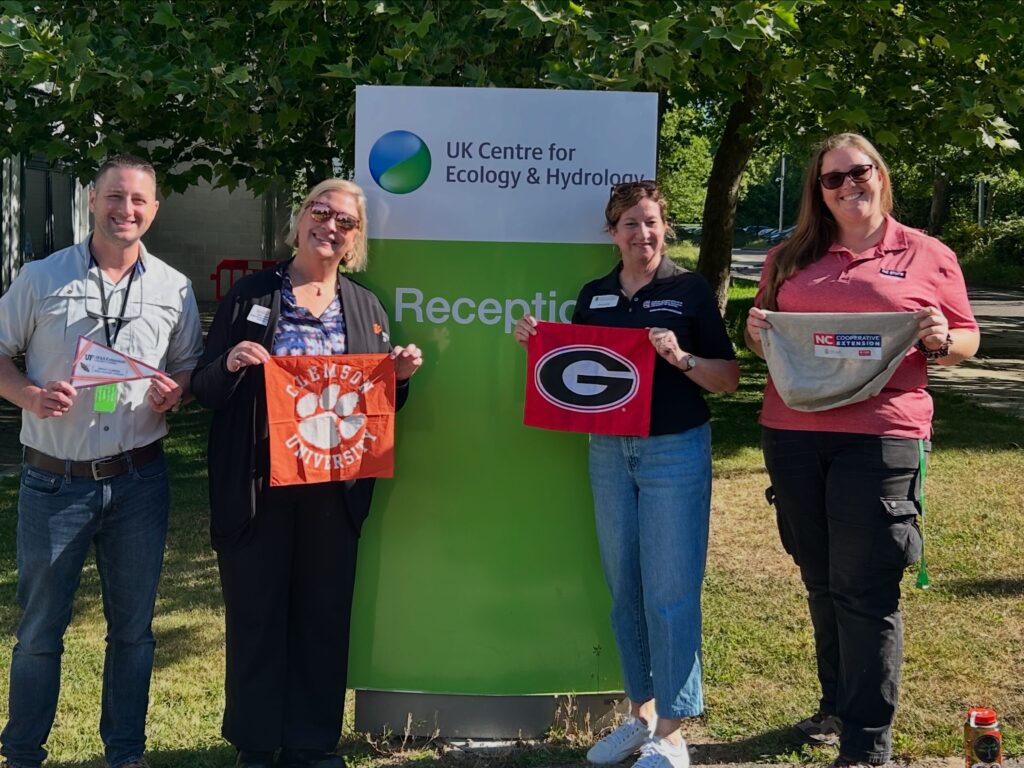
Excitement is buzzing around the 2025 Great Southeast Pollinator Census (GSePC) that will take place on August 22 and 23, 2025. As the South Carolina Census coordinator and an avid pollinator gardener, I am always excited to share the GSePC with every gardener and pollinator enthusiast I meet, which in my line of work is quite a few!
If you aren’t familiar with it, The Great Southeast Pollinator Census is a citizen science project, designed and led by Becky Griffin, University of Georgia Extension Community & School Garden Coordinator. The Census has three goals: to create sustainable pollinator habitat, increase citizens’ entomological literacy, and generate valuable data about pollinator populations. Since South Carolina joined in 2022, Florida, North Carolina, and Alabama have joined to help make every pollinator count across the southeast!
One of the things that makes the census truly special is the wealth of resources developed by Becky Griffin and the other state census coordinators. These tools make it easy to incorporate this impactful citizen science project into school garden programs, community gardens, parks and recreation activities, botanical gardens, and public library outreach, just to name a few. While anyone in South Carolina can participate in the Great Southeast Pollinator Census, and the resources are equally valuable for backyard gardeners, this article will focus on helpful tools for planning public census events, as our primary audience is schools and community gardens.
No matter where you count, all you need to participate are flowering plants, pollinators, a counting sheet and, as Becky often says, a glass of sweet tea since you’ll be counting outdoors in August. However, if you’re hosting an GSePC event at a public garden, or workplace you’ll want to prepare a bit before the big day.

To get started, beeline it to the website https://gsepc.org/, where you will immediately find a list of ways to prepare for the upcoming Census, including signing up for the latest newsletter and downloading and printing counting sheets, insect guides and pamphlets.
Next, I recommend watching the pre-recorded webinars, The Pollinator Census—How-To and History and The Pollinator Census for Educators and Non-Profits. For more insect identification tips, North Carolina Cooperative Extension recently recorded this helpful webinar Get to Know the Insects: Great SE Pollinator Census Insect ID Webinar.
To spread the word about your event, tap into the readymade marketing materials, including the adorable insect mascots, to create flyers and social media posts. Follow the Southeast Pollinator Census Facebook page and join on Instagram @SoutheastPollinators to stay in touch with other participants across the southeast. Whether you are hosting a pollinator census event in your school garden, at a public event or at home, download and print the 2025 Great Southeast Pollinator Census “I Counted” Sticker! Wear your sticker with pride to let everyone know you care about pollinators. There are also printable participation certificates available for download.

Guidance for Specific Groups Involved with the Census, a publication prepared by North Carolina Census Coordinator, Amanda Wilkins Brachter, a horticulture extension agent for North Carolina Cooperative Extension is fantasic. This web-based resource offers tips for engagement and activities to build momentum for anyone interested in participating in the GSePC, including public/private school educators, homeschool groups, farmers, conservation organizations, youth or 4-H participant, Master Gardener volunteers and more.

Let us help you generate some buzz for your Great Southeast Pollinator Census event! Tag us on social media or email us the details—we’ll help spread the word. Let’s make every pollinator count this year!
Written by Amy Dabbs, Clemson Extension School and Community Gardening Associate and South Carolina Census Coordinator
